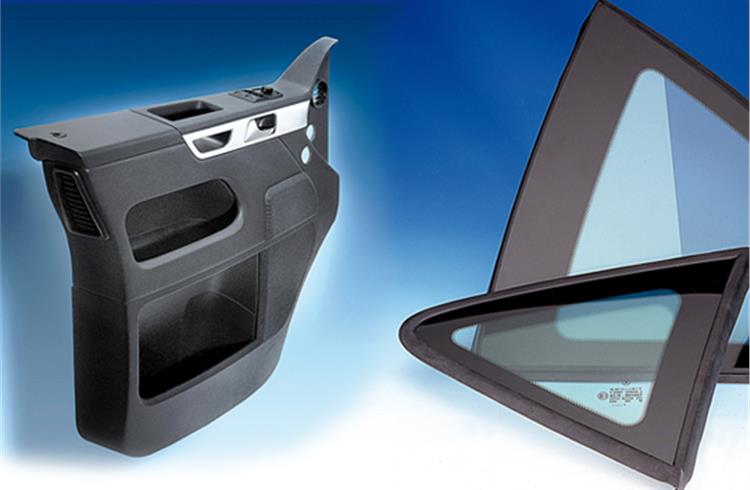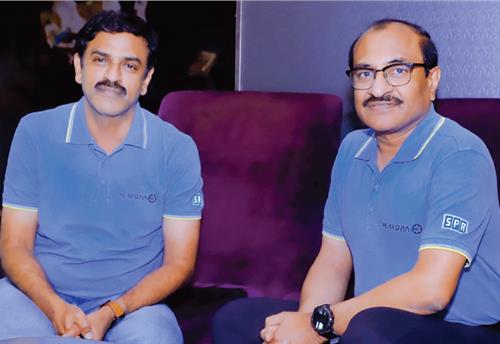2012 Lightweighting Special: Exxon Mobil Chemical targets speedy growth
Cashing in on this growth is ExxonMobil Chemical which had hosted a huge display of its specialty chemicals and polymers at the PlastIndia 2012 in February at New Delhi.
Cashing in on this growth is ExxonMobil Chemical which had hosted a huge display of its specialty chemicals and polymers at the PlastIndia 2012 in February at New Delhi. The company showcased its polymer solutions that enable innovation in packaging, automotive and non-woven applications like Enable and Exceed metallocene polyethylene resins, Vistamaxx propylene-based elastomers, Santoprene thermoplastic vulcanizates, Vistalon EPDM rubber, polypropylene resins, Exxtralpolyolefins and Achieve polymer resins. These contribute towards the finished product in terms of reducing part weight and costs, improved part performance, a non-polluting vehicle, improved manufacturing efficiencies and sustainability. The company’s high performance polymers and chemicals facilitate auto designers, engineers and material engineers to capture benefits of optimal parts performance for static weather seals, interiors and under-the- hood applications.
For instance, its Vistalon EPDM rubber is useful for extruded weather seals (mainly sponge) and under-the-hood applications, while Exxtralpolyolefins find applications in interior and exterior applications. The ExxonMobil impact copolymer PP resins can be leveraged as a base-stock for automotive compounds.
The polymer supplier visualises India to be one of the fastest growing automotive markets in the world where the use of plastics is expected to multiply as the industry develops and responds to changing market trends. Importantly, the Indian auto industry is faced with similar challenges as the global industry, which is to build cars with reduced fuel consumption, lower emissions, enhanced performance and productivity. Engineering plastics can help automakers to address these challenges, which means great opportunities to grow in India, says Dina Wang, marketing manager for ExxonMobil Chemical Asia Pacific Automotive.
The company’s R&D Technology Center at Bangalore supports customers’ needs locally with application technology development leveraging its global knowledge base and technical expertise.
 |
In sync with OEMs
Wang says the company has developed strong relationships with OEMs in India to address their sustainability concerns by providing lightweight solutions. For example, Santoprene TPV offers 29 percent weight savings for GRC systems versus EPDM rubber and 25 to 45 percent weight savings for clean air ducts versus TSR compounds; Exxtralpolyolefins replacing metal and denser plastics on bumper fascia provide weight savings of 10 percent compared to plastic and 50 percent compared to metal.
Plastics are increasingly being considered a vital component in today’s auto industry, offering lightweight, tough and low-cost alternatives to traditional materials. They help improve fuel efficiency, reduce greenhouse gas emissions and also lower manufacturing costs.
Enhanced design freedom through use of plastic components allows greater styling flexibility and lower cost modular component design. This reduces manufacturing costs and total vehicle costs. Numerous modern safety systems, from seatbelts to airbags are also based on plastic components. In fact every pound of plastic and composites used to lightweight an automobile delivers two to three pounds of weight savings in that vehicle. Lighter-weight plastics are used extensively throughout the interior and across the exterior of today’s automobiles. It is estimated that a typical car in North America uses about 330 pounds of plastics and composites, replacing up to 835 pounds of metal or other heavy material, says Wang.
Even in India, the plastic content is increasingly replacing steel because the density of plastic is a seventh of that of steel. Further, plastic is recyclable and promotes green mobility.
Following the very positive response it received at PlastIndia and the general demand from OEMs in India, Exxon Mobil is optimistic about growth in the country.
RELATED ARTICLES
BRANDED CONTENT: Eliminating the worries of battery charging with smart solutions
The charging infrastructure is the backbone of electric mobility but is also one of the key perceived barriers to EV ado...
The battery-powered disruptor
Greenfuel Energy Solutions is planning to shake up the EV battery market with the launch of a portfolio of specially eng...
SPR Engenious drives diversification at Shriram Pistons & Rings
The engine component maker is now expanding its business with the manufacturing of motors and controllers through its wh...





 By Autocar Pro News Desk
By Autocar Pro News Desk
 31 May 2012
31 May 2012
 3069 Views
3069 Views









